Buzzwords are like passwords that make people feel like they are locked out if they don't fully understand their meaning.
Advice, resources, and insight on how to make social engagement work to grow your business and career.
Viewing entries in
Blog
Buzzwords are like passwords that make people feel like they are locked out if they don't fully understand their meaning.
Once you Find out who is influencing your company’s brand you can build relationships with them. If the leaders of your company are not among them, they need to be and here are a few steps you can take to figure out who they should be and how you can increase their influence.
Investing in your brand without investing in who is going to influence it the most is kind of crazy. And since "social media" is so obviously about people, it's important to understand how important the personal brands of your people are on social channels.
 David Hayward, known around the world as the "naked pastor" is an expert on building nurturing, connected, loyal communities of people who care about what the community stands for - what every social business should strive for.
David Hayward, known around the world as the "naked pastor" is an expert on building nurturing, connected, loyal communities of people who care about what the community stands for - what every social business should strive for.
 His nakedpastor cartoons and content is viewed and shared by over 200,000 people each month and he just started a brand new democratic, online community called The Lasting Supper "for people who want to transition into a life of personal, intellectual and spiritual freedom and independence".
His nakedpastor cartoons and content is viewed and shared by over 200,000 people each month and he just started a brand new democratic, online community called The Lasting Supper "for people who want to transition into a life of personal, intellectual and spiritual freedom and independence".
David is NOT here to talk about spirituality (although you probably wouldn't have a hard time getting him offline in a sidebar discussion), He is leading the discussion to focus on what social businesses need to figure out more than anything else: how to build a community around your brand.
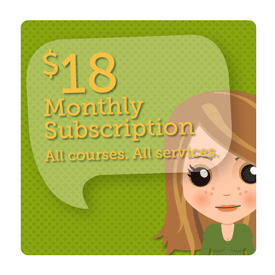 As the Learn by Sociallogical™ Mentor On-Call for October, David will respond to comments posted to the site, blog his own thoughts on growing communities and on a few lessons in our Learn courses for business, and make sure mentorship stays at the heart of how we learn throughout the month.
As the Learn by Sociallogical™ Mentor On-Call for October, David will respond to comments posted to the site, blog his own thoughts on growing communities and on a few lessons in our Learn courses for business, and make sure mentorship stays at the heart of how we learn throughout the month.
Leave a comment in the courses or in the open forums this month and David is sure to respond. He's a bright, thoughtful guy and we are very happy to have him as our very first Mentor On-Call!
Add David as a Friend so you can talk to him about building your own brand community. You can find him in Learn by Sociallogical™ at http://learn.sociallogical.com/members/nakedpastor
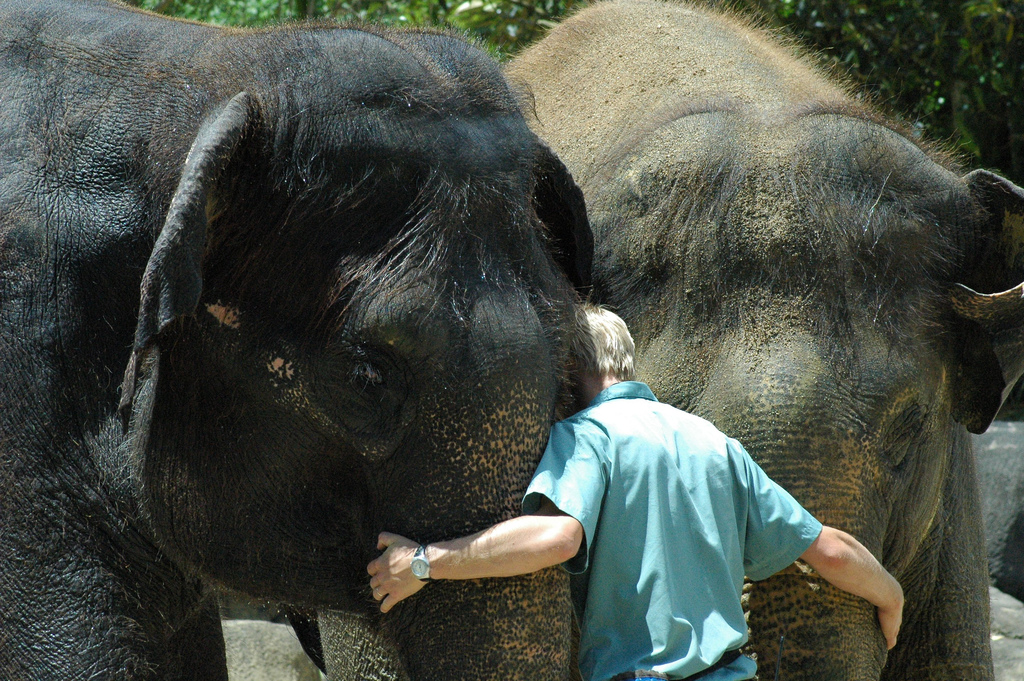 90% of customers will recommend brands after social media interactions (read the story) and that should make things very
90% of customers will recommend brands after social media interactions (read the story) and that should make things very  clear for every business: if you are not interacting with people you are letting someone else steal your influence.
clear for every business: if you are not interacting with people you are letting someone else steal your influence.
This study and others validate a social business posture because it supports a long-held understanding of human motivation that when people feel important, cared for, appreciated, they respond positively and with support. By talking, listening, and helping consumers, companies endear themselves to consumers in a very human way. That's social.
Showing your customers that you appreciate them and that they are important to you is and always will be the best way to earn and keep their loyalty and to spread endorsements for your brand.
Online social channels allow a business to do this in a very real and manageable way and should be a priority for any company that considers loyalty and customer recommendations to be important.
I feel a little silly explaining this but here goes: listen to what people are saying, talk to them, understand them, and show them the kindness that expresses your appreciation for them and what they have to say. These are basic communication skills for decent people and they are just as important online.
"The deepest principle in human nature is the craving to be appreciated." - William James http://t.co/KkCrbmyRjn #learnsocial
— Sociallogical™ (@soclogical) October 11, 2013
Create a list of those who influence your brand in a positive way online so you can pay special attention to them. They are as important to the success of your company and your future sales as many other factors that you invest in.
The worst thing you can do is let the supportive efforts of your influencers and advocates go unnoticed and unappreciated.
This is a brief message leading into the Canadian Thanksgiving weekend. What do you do to show your online community that you appreciate them and are thankful for their support? Please tell me in the comments. I want to know.
 Richard, Vincent, Katherine, Margaret, Lawrence, and Elizabeth have all been lost to me online because I have been looking to connect with Dick, Vinny, Kate, Peggy, Larry, and Beth - the names I know them as.
Richard, Vincent, Katherine, Margaret, Lawrence, and Elizabeth have all been lost to me online because I have been looking to connect with Dick, Vinny, Kate, Peggy, Larry, and Beth - the names I know them as.
Just because your parents named you Stephen doesn't mean you are disrespecting them by being Steve online. And if everyone knows you as Steve, when they go looking for you online they're not likely to find you if you're listed as Stephen.
The whole purpose of creating an online profile, on any social media channel, is to connect with people and to give them an authentic picture of who you are.
So the best approach is to think like a search engine. What will people search for when they look for you? Make that the name that you use on your social profiles. And while you're at it, make sure that the keywords that people are likely to think of when they think of you are also included in your profiles so they get picked up by search.
My real name is Jeffrey. It's the name my parents gave me and it is the name on my Passport and other formal/official documents. But everyone in my life knows me as Jeff. Fortunately for me, Jeffrey is likely to get picked up by most search engines when searching for "Jeff" but a scan of search results by any friend who is looking for me is likely going to miss my 7 letter full name if their brain is scanning for 4 letter names starting with J. So I use Jeff always.
Now imagine if your name is Margaret but you are known as Peggy! Who in the world is ever going to know to search for Margaret?
People aren't going to visit your profile repeatedly after they've connected with you. When they are looking for you you don't need them to find the formal you, just the you they are familiar with for one simple reason: so they can connect with you.
Include your more sophisticated name elsewhere in your profile if you can. In your Linkedin summary, maybe mention your full name somewhere or even tell the story of how you came to shorten your name if it's a good one.
You don't need to let go of your proper name. But if you don't use it regularly, put it in the same place you have it in your everyday life: in the background as a passing reference.
Photo ref: That's me and my friend Manami Fukuda being very sophisticated while modelling for a very fun and memorable event a few years ago.
 Likes, follows, or being added to circles are passive expressions of a low-level of interest that businesses pursue simply because they are numbers that can be measured, pure and simple. "How many" do we have this month compared to last month? It's a natural instinct to count numbers to measure perceived growth in a space that is always misunderstood by pretty much everyone in the beginning.
Likes, follows, or being added to circles are passive expressions of a low-level of interest that businesses pursue simply because they are numbers that can be measured, pure and simple. "How many" do we have this month compared to last month? It's a natural instinct to count numbers to measure perceived growth in a space that is always misunderstood by pretty much everyone in the beginning.
But when we play with social media for a little while we eventually come back to remembering that we are in business to sell something to people who need it. And as we know from politics, just because someone says they like you doesn't mean you'll get their vote when it counts.
One of the greatest and most necessary features of social media is the ability to filter out noise. When we can listen to such a massive number of people and businesses in this wide open online world we run into limits almost immediately as humans. We need to filter to get any value out of these channels.
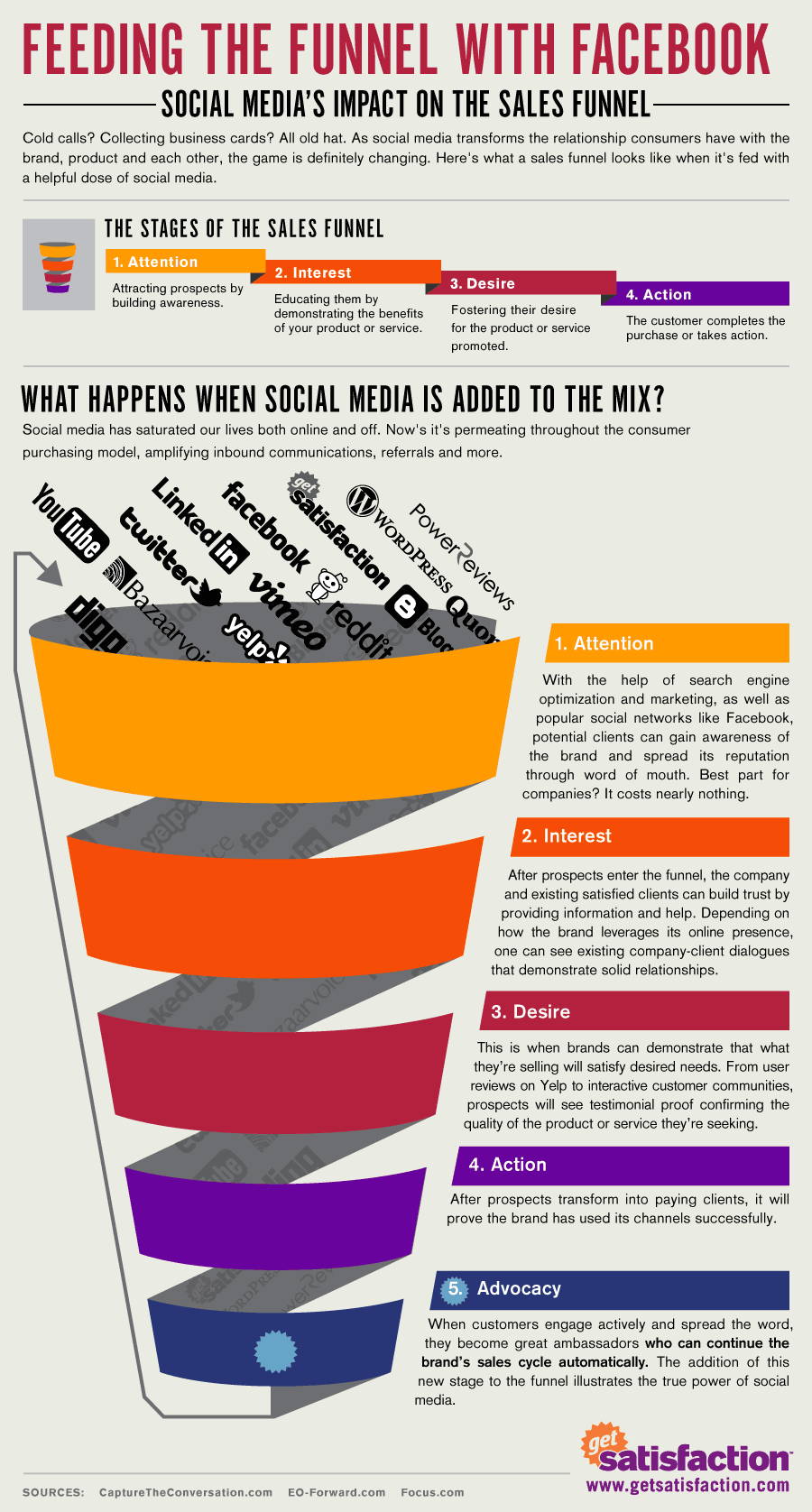
On Facebook, as quickly as you can call someone your friend or Like a business' page you can "Hide" them from your feed and never hear from them again. This should stop any business in their tracks who believes these superficial numbers count for anything close to long term value for their business. They don't.
On Twitter, the only thing gained by someone following you is that you can then send them a private direct message, which is basically an email. And we have a well-known word for a business who would abuse this channel: spam. Twitter is the truly wide open channel in which using a filtering tool so you can
pay attention to hashtags or lists of people with special interests is necessary to get any value. So if you have 1000 followers on Twitter you can't have confidence that any percent of those followers are paying attention to anything you post. What's even worse is that 85% of all tweets are never seen by anyone, ever.
LinkedIn may be the only social channel where the number of connections matters because there is little social activity. It is powerful and personal but brands struggle to get their numbers up for their Company pages on this professional, etiquette-driven channel.Google+ is the most recent major social platform to emerge and is actually built for when things get noisy. By allowing users to curate circles of their own design, it is an essential feature of this channel to choose who you want to listen to every time you visit.
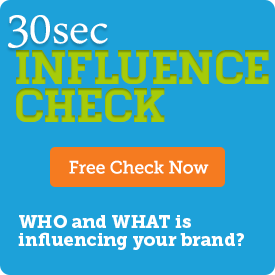
Social media presents your business with the opportunity to connect with customers in a two-way relationship. It is not a new broadcast channel and those who treat it as such are severely punished with isolation and a damaged brand. It's why so many businesses have "tried social media" and let their efforts die in frustration.
What you can do is measure activity on your channels and find out who is influencing your brand. Who is talking about you and with you and getting your content to new people who might be interested in it? Your influencers are having an impact on your brand in a way that growing follower numbers just is not. Social is about people, not audiences. [tweet this]
When you know who your influencers are you can get to know those people better. Smart businesses will look for ways to reward influencers for their interest in an effort to convert them to advocates that love what your company does and talk positively about your brand to others.
Advocates generate leads. Leads can be converted to sales. And sales are what grow businesses. Measuring this progression of the online relationship is how you measure the ROI of social.
Is your business counting followers or are you earning the deeper interest of your brand influencers? Please tell me what you've learned in the comments.
 We forget sometimes that ads are content, blogs are content, and social sharing is content. Your competitors have content and it is all public and discoverable.
We forget sometimes that ads are content, blogs are content, and social sharing is content. Your competitors have content and it is all public and discoverable.
What makes it even more interesting is that your competitor’s influencers share content too and you can watch for that as well. You can see who is spreading the word for your competitors and helping THEM grow! That is gold, is it not?
It’s not what you can discover that’s so special (although it really is), it’s what you do with the data that counts. So here are 3 things you can do when you know what your competitor is up to:
1. Watch for your competitor’s top content and dissect what makes it work and what doesn’t. When you’re confident that you have nailed what makes one of their blogs work better than another one you can incorporate the winning approach in your own content (your marketing team should have a ball with this).
2. Pay attention to who your competitor’s influencers are; the people who share your competitor’s content so they can reach their target audience. You can add them to a watch list of potential influencers of your own brand and regularly look for non-poachy ways to start and grow relationships with them. If you learn that one of their influencers is the CEO’s husband, well, you know.
3. Learn what hashtags and communities your competitor’s influencers use to get the word out and spend some time in those online neighbourhoods yourself. Use their tags occasionally and visit the blogs they visit. It’s a great way to get to know what interests your community.
Added bonus: if you know the sentiment (positive, negative) that people feel towards your competitor’s content you can think of ways to get more positive content into the same online communities. Sleeze alert: there is a huge risk of coming across as tacky if you don’t think this through with some respect for your competitor and their fans.

You can do it simply by paying attention and creating a scheduled time to regularly look at your competitor’s content. We actually use a tool called Measurely to run discovery campaigns that give us this and a bunch of other super valuable data for our clients. But if your brand community is still small you should be able to handle this with some regularly scheduled snooping and gathering of info into a spreadsheet.
It’s worth it. Your competitors are sharing content that they hope will interest the same people you are. Why limit the data you gather and learn from to just your own when you can learn from theirs too?
 Advertising has always been a bit of a game of roulette. The famous quote that captures the angst of the business owner was portrayed by John Wanamaker nearly 100 hundred years ago when he said, “half the money I spend on advertising is wasted. The trouble is I don’t know which half.”
Advertising has always been a bit of a game of roulette. The famous quote that captures the angst of the business owner was portrayed by John Wanamaker nearly 100 hundred years ago when he said, “half the money I spend on advertising is wasted. The trouble is I don’t know which half.”
I promised I would not name names.
But in the past two years I have had several clients who cut over $1000 per month or more from their advertising budgets - and saw no drop or difference in their business.
What? In one case nearly $3000 per month with no discernible difference in the bottom line? What is going on here?
If you had a big budget twenty years ago, advertising was also a bit of a math formula - or at least so I was told by my business owning friends who fighting the good fight at that time. They tell me that once you had the right channel (TV, radio, or print) you could roughly figure that if you spend X% of your gross revenue, you would see a Y% bump in the bottom line.
I am not sure the good old days were really better.
Today there are more options and more voices clamoring for your advertising and marketing budget than ever before. Do you keep you space in the Yellow Pages? Is it worth paying for exposure in the business directories? How about search engine marketing? Or social media? Everyone seems to be on Facebook these days...
Making sense of the shift to digital and social business is one of the biggest challenges for small business owners and managers these days. The shift seems to elicit one of two reactions: “Oh yeah!” or “Oh no!”
Here are a couple of quick ideas to consider if you’ve “discovered” an extra $30,000 in your advertising budget this year. Yes, I know you deserve that long postponed vacation, but this is about low-hanging fruit that will make the best ROI of what you are already doing:
If you haven’t found excess money in your advertising budget, or are struggling to figure out what might be the best use of your hard earned dollars - you can make sense of this new chaos. The businesses who do, are going to own their competition in the near future. The ones who don’t can stick their head in the sand, because even in the slowest of markets - social business is becoming the new phone, and your customers are expecting you to answer.
If you want to make sense of your advertising budget, and get a better ROI on the dollars you are already spending, join us for this focused workshop and save thousands over the course of the year...
 Bringing one group of friends into a conversation that's happening in a different place on the social web isn't always easy. Sometimes it's awkward and sometimes it's unwanted. But you never can tell where the conversation will strike up and sometimes it makes sense to bring those conversations together. And it always makes sense to bring the best content you have curated into your media hub: your blog.
Bringing one group of friends into a conversation that's happening in a different place on the social web isn't always easy. Sometimes it's awkward and sometimes it's unwanted. But you never can tell where the conversation will strike up and sometimes it makes sense to bring those conversations together. And it always makes sense to bring the best content you have curated into your media hub: your blog.
For a while now Twitter has been allowing tweets to be embedded into web pages with a little bit of code they provide with each tweet. Just look under any post on Twitter.com and you'll see a "more..." link that drops down to expose an "Embed" link. Grabbing the code provided will allow you to embed something like this:
"Either write something worth reading about or do something worth writing about." - Ben Franklin #quote
— Sociallogical™ (@soclogical) November 21, 2011
I could just paste a quote into my post so you can see it and read it, but because I embedded it as a tweet, you can now retweet it, favorite it or do whatever you like to interact with that content on Twitter.
Now Google+ has entered this game, allowing posts on the fastest growing social channel in the world to be embedded into blogs and webpages everywhere, pulling new people into conversations that are already in full swing.
There are a few things that make this even more interesting than Twitter's offer:
Give it a try. In the drop down menu in the top right of your public Google+ posts you'll see the link to "Embed this post". Grab the code and use it the same way as the Twitter embed code.
Embedded Twitter and Google+ posts provide interesting ways to repurpose your social content into your owned media and introduce one segment of your community to another to extend the conversation and bring your brand community more closely together.
What could you embed in your blog that pulls your social media islands closer together?
 The hope that most businesses have is that their advertising will buy them customers immediately. But social media has introduced the long game to every business and a bigger opportunity is lost if buying new customers is the only perceived benefit.
The hope that most businesses have is that their advertising will buy them customers immediately. But social media has introduced the long game to every business and a bigger opportunity is lost if buying new customers is the only perceived benefit.
Marketing is the effort of generating awareness and demand for something. To reach large numbers of people who get their information primarily through traditional media, traditional advertising is hard to beat, especially for locally focused businesses.
If a local newspaper reaches 60,000 people and it produces 20 new customers, that’s an ROI you can judge for yourself. But if those 20 customers become members of a community that you nurture over the long-term, you have amplified the impact of your first advertising spend for many years as those 20 people continually think of you when they again need what you sell.
Traditional advertising can reach eyeballs within a certain, shrinking demographic that is still valuable to a lot of businesses. Social channels can then enable you to turn your new customer's interest into a relationship that lets you engage them and keep them interested.
Traditional advertising can help make people aware of what you sell, but big returns on your investment can only happen if you have a community that they can belong to that can continually meet their needs and keep you on their minds.
Fall 2013 Workshop: How to plan and pay for the shift from traditional marketing
Use traditional advertising to encourage people to contact you, buy your product, or walk in your door. But when that contact is made, make sure you have next steps planned to bring those interested people into your brand community where their relationship with you will mean far more in long-term sales than that first encounter.
Focus your online efforts on building a community through meeting people’s needs and interests with what you share. Focus your advertising efforts on converting people to become, not just customers, but community members. Loyalty, repeat sales, and long-term insight into what your customers want from you is what brand community building is all about.
An African proverb says that it takes a village to raise a child. I believe this is true. I can't imagine where in this world my baby boy would be without the love, support and nurturing of those in our community.
I am also lucky enough to be a member of a more specific community of new moms. That’s us up there in the photo. Bi-weekly we meet in each other’s living rooms, put on a pot of coffee and ventilate our baby woes, share stories and experiences, learn from one another, laugh together, reassure each other that we are doing just fine and, most importantly, we remind each other that we are not going this motherhood thing alone.
Much like it takes a village to raise a child, it takes a community to raise a brand.
This is the next lesson in a series of posts about what my infant son has taught me about life and content marketing (here's lesson 1).
I will never forget the music to my ears that was a fellow expectant mom exclaiming, “we should get together for regular coffee and Bailey’s gatherings after our babies are born.” I'm not sure if I was more excited to fathom a social life after baby, or the ability to finally enjoy an alcoholic beverage again. In any case, she was the leader our mommy community needed.
You see, it takes a leader to get a community going, and then it takes keen individual interest to keep it going. We mommies are fortunate to have all the right ingredients for a healthy community.
Sure, we get together and talk about the best baby rearing practices, articles we've read, developmental milestones and statistical norms, but these discussions alone are not what gel our community together.
This stuff we can get from the googles.
The cohesion of community goes beyond information sharing. A community is formed around a common goal, an emotional connection, a shared opinion, a sense of security, belonging and ownership, safety, non-judgement, protection and understanding. We have expressed on many occasions that we love and care for each other’s babies as if they were our own.
When you’re creating a community around your brand, your members need something to CARE about.
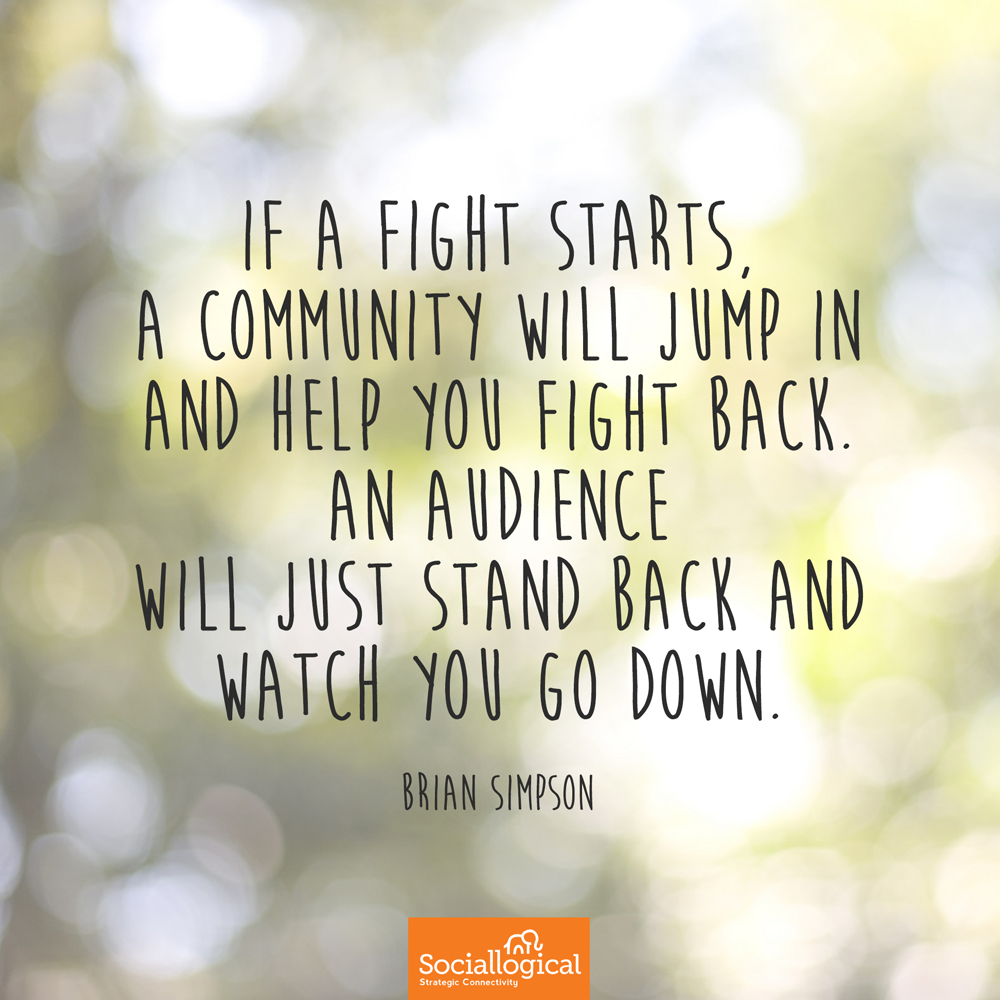
Actually, mean people can galvanize a community, pulling people together to care more deeply for what brought them together in the first place.
Motivated by who-knows-what, some people are just innately mean-spirited. It is no secret that social media is a breeding ground for meanies to unleash their inner bullies. They can attack the community, sometimes in very stealthy ways, by framing their communication in an accepted manner and style. Eventually their contributions will undermine what people in a community care about and raise the ire of some members to defend what is important to them, and in doing so they will freshly define the essence of the community for others to rally behind.
The critical mass is the tipping point, the point at which the community becomes self-sustaining.
Finding this threshold is not cut and dry. Apple Computer's current community mass is over 200 million. Our mommy group: 11 pairs of moms and babes. There is no magic formula to determine the critical mass of your community, however you will know it has begun when your community starts to initiate activity independent of your leadership. For example, a retailer might plan events that bring customers to their store but critical mass is achieved when the community begins to plan their own events around the brand. Recently I was invited by a friend to attend a party at a local shoe store. The staff were every bit a part of the party and little to do with the planning.
Sadly, our mommy leader needed to ‘bow out’ as she put it, to return to full time work. She is still very much a member of our group, but our mommy community lives on in her absence.
If you spoon feed the right ingredients that support what your community cares about most, there will come a point when you can sit back, and enjoy. Like an infant, your community has learned to feed itself.
No one is a member of just one community. We overlap and cross-reference and bring great things from one into another. But what binds a community is the one or two things its members care about the most and the characteristics of how the caring is expressed. Our mommy community cares primarily about our babies. But the characteristics of our community are based on openness, non-judgement, and love of a good time in a real sense, not just a motherly one.
What does your brand community care about the most and what are the ways in which you express that caring? If you find 5 minutes today, list these things for yourself. If you can identify what really matters to your community it might change how you share with them.
Next lesson: Trust with a capital T
The quote above from Brian Simpson actually came to us from a great ebook by our friends at Measurely.
 Two years ago I signed my team up to participate in a course to teach us how to build a social business. It lit a flame that has been burning ever since. Telling our company’s story using social channels has helped us build community around the world. The course was Sociallogical’s Understanding Social Business and, after completing the course, Sociallogical’s Jeff Roach and I discussed the possibilities of putting together a course about the power and brand empowerment of video storytelling in the new digital landscape.
Two years ago I signed my team up to participate in a course to teach us how to build a social business. It lit a flame that has been burning ever since. Telling our company’s story using social channels has helped us build community around the world. The course was Sociallogical’s Understanding Social Business and, after completing the course, Sociallogical’s Jeff Roach and I discussed the possibilities of putting together a course about the power and brand empowerment of video storytelling in the new digital landscape.
It took a year and a half to accomplish, but here we are! Hemmings House and Sociallogical are very excited to roll out our latest course, “Moving Pictures: Making and Sharing Social Videos”. This is an introductory course that will motivate you to pick up your own camera and begin producing content for your business immediately.
Video is considered one of the most effective communication tools in the social space. Businesses are now building their own production companies within their own walls to keep up with the demand for original and relevant content that supports the brand and the tribe.
My hope is that this course will ignite the same fire in you that the Understanding Social Business course did for my team and I. Once you realize that you have the power and the creative assets to tell your own story (and that your own story is truly epic), then this course will encourage you to get out there and shoot!
 Lesson 1 in a series: What my infant has taught me about blogging/content marketing
Lesson 1 in a series: What my infant has taught me about blogging/content marketing
My son was born exactly 6 months ago today. As any new parent can attest, my life has gone from a regular work, eat, sleep, [repeat] routine to a whirlwind of spit up, shit up, sporadic napping and a whole lot of ‘firsts’ for both of us. My love for my baby boy runs deep. Already, I can’t imagine a world without him. While it might seem that I am teaching and moulding this new being into the kind, compassionate and thoughtful human that I wish everyone could be, the truth is, he really is the one who has been teaching me about life’s deeper dimensions...and how to function on much less sleep.
And while learning these big lessons of life, my life as a content marketer has been influenced as well. I see what we do to build brand communities and grow businesses for niche clients in a different way as well and I have decided to collect a few of these lessons. Here are a few important lessons I have learned from being a new mom that apply to growing brand communities.
Tell a long story to an infant and see how long his attention lasts. On a good day, you might hold his gaze for 30 seconds. Now tell a long story to your social business audience. On a good day, they might stop reading after 30 seconds.
In today’s content rich society, readers are getting slammed on all fronts with news, articles, blog content, and funnies. On a daily basis we spend several minutes a day fending off content that comes from a variety of channels. In fact, most days I feel like I am more of a content ninja - stealthily killing content and chopping bad subscriptions - than a consumer. The point is, the story you want to tell or the message you are trying to convey needs to lock and load the reader. Here are a few tips that are tried and tested on my 6 month old budding human:
I remember a time in my own childhood that I wouldn't look twice at a piece of reading material if it didn't have some visual stimulus. I didn’t judge a book by it’s cover, but I certainly did judge it by the volume of imagery. Visuals are an important element for drawing the audience in and keeping them engaged.
The evidence is in the platforms. Such consumption applications as Instagram and Pinterest hinge almost entirely on visual delights. Facebook and Google+ have adopted much more visually gratifying formats as well. Find a way to catch your reader’s eye with something aesthetic.
Engage your audience. Giving them an opportunity to weigh in and keep the conversation going, or providing interactive points is a great way to achieve reader buy-in, and keep them checking back for more. It isn’t enough to just broadcast to your readers anymore, they don’t just want to listen. They want to participate, they want to be a part of the story you are telling.
How do you engage your child? #thisissocial
— kellylawson (@kellylawson) June 8, 2013
If people aren't judging books by their covers and pictures, they will judge a story by its title. As 60s copywriting legend David Ogilvy says,
“on average, five times as many people read the headlines as read the body copy. When you have written your headline, you have spent 80 cents out of your dollar.”
If you don’t hook your reader with a compelling title, your story and message won't make it past the content ninja phase.
(I didn't make that title up) Like a lullabye, once you've written and read and re-read and re-edited your content, it all begins to sound the same. If what you have to say isn't time sensitive, take a night and sleep on it. Revisit it in the morning with a fresh outlook. If time is a factor, pass it over to a trusted third-party editor because you're too tired of it to make a good judgement. You will be amazed at how your perspective will change, and the errors you will have missed.
Watch for LESSON NUMBER 2 next week: Why community matters and mean people suck...and, tell me about your experiences with engaging your audience, infants, adults, spouse, cats...what works? What doesn't?
Sign up for our updates if you haven’t already
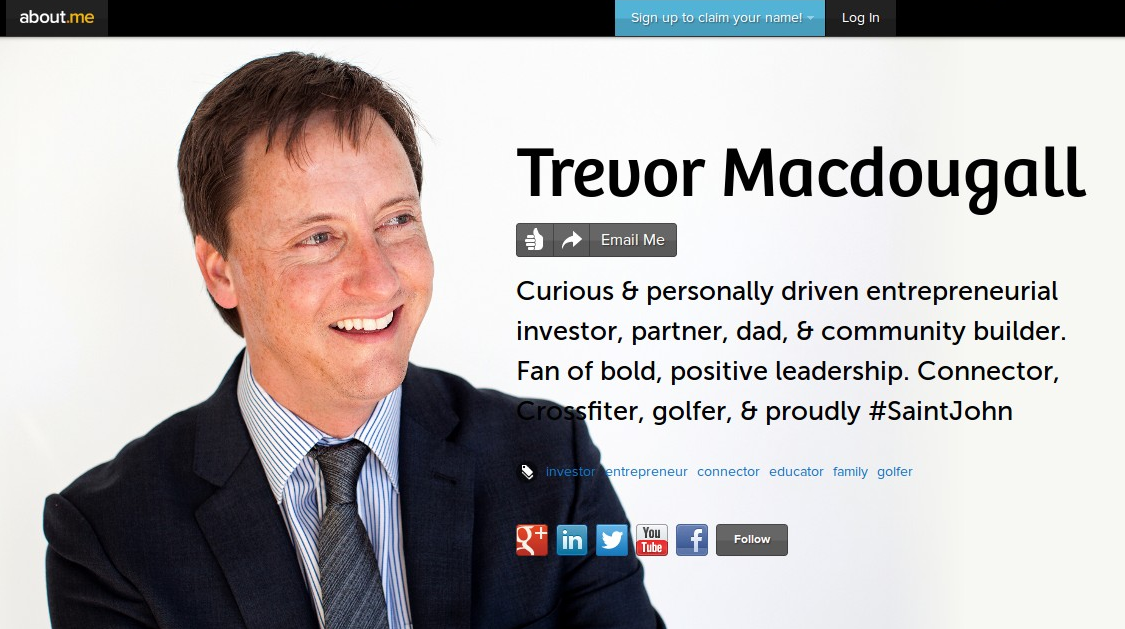 You may think that having a strong profile in all places might be only for the hyperconnected so I have a strong suggestion: pick one and beef it up.
You may think that having a strong profile in all places might be only for the hyperconnected so I have a strong suggestion: pick one and beef it up.
While many of us have accounts on multiple websites, social networks, and our employer's sites, very few people pay attention to the quality of their online presence and the ease with which they can be reached by a client or partner. We have discussed before how your profile is your ticket to getting connected with others online but we never addressed which profile is the most important. I honestly don't think there is a best one for everyone but here is some food for thought:
Really, this is the most important profile for professional people in the western world. Your profile on Linkedin is comprehensive showing me your volunteer activities, who you're connected with that I might be connected with, as well as the richest display of your education and experience. If you don't have a sizable inheritance and need to make a living from your connections to one or more people, you need to be on Linkedin. If you are in a B2B role, you might want to make this your main profile that you give the most attention to.
Put aside your opinions of love or scepticism for Google+ as a social sharing channel and pay attention to this: your Google+ profile feeds your Google search results and Google search is how most people still find pretty much everything online - including connections. It is also the best profile for linking to all of the other places you can be found online and it includes one of my all-time favorite profile features for understanding another person's perspective: where have I lived before. If you want people to find you easily you might want to make Google+ your main profile.
About.me is like an online business card or a central hub for all of your other profiles. It has competitors but it is the most popular profile-only account you can have that doesn't have a social network behind it. It is easy to get, simple to use, attractive, and adapts your profile to a variety of screen sizes well. If you are picking one main profile to focus on, this might not be it, but if you have more than a couple that you give attention to, this might be a good place to bring them all together. I use it for my main URL: jeffroach.ca
The largest, most influential social network on the planet has a lousy profile format that not a lot of people rely on to get to know someone new. Facebook's profile is loose, un-standardized and sloppy and geared more for friends who know each other well than for discovery of someone new. However, Facebook does feature more personal preference type of details that might paint an endearing picture for you if you want to be known more for your interests than your experience. Artists, curators, and culture-lovers can show their favorites of all things well on Facebook and that might be your strength.
With a bio of only 160 characters and only a few other details like location, web link, and not much else, your profile on Twitter is too short and simple to ignore. Beef up your profile on Twitter because it will only take you a few minutes. But don't expect your profile on this channel to satisfy the interests of a connection who is trying to get to know you better. I simply would not recommend using Twitter as your main profile online. Link from it to something more comprehensive.
There are countless third-party profiles you can focus on and beef up and some of them can be very important, especially if they are specific to your industry and widely used by your colleagues. But the ones mentioned above are the big ones, in my opinion.
We don't all have time to be everywhere online and we certainly can't manage to support an endless collection of perspectives on who we are, what we've done, and why others might want to get to know us better - or hire us. But everyone needs one main profile that makes it easy to find out who they are, what they've done, and how to connect with them right now. What is your main profile and are you happy with what others will find there?
It is not a new thing to spend money on marketing based on the number of people who will be exposed to the effort. It is a new thing to know how much money was earned as a result of money spent on a marketing effort.
While media outlets have always been able to tell advertisers the size of their audience through subscription numbers, average viewers and the like, they could never measure the outcomes that really matter to a business - they still can't. And even in the social business era, justifying a marketing effort has continued to be a measurement of buzz, chatter, and the general response created by what was shared. Is that enough?
For most brands, the goal is to make money and grow. So money spent on marketing or any other investment needs to measure how it makes money and moves the business toward its goals or it just doesn't make sense. Does it?
If you can really measure the return on investment (ROI) made in the social space with real business measures then you can start optimizing your efforts based on what has worked or not worked in your past efforts.
Last week our friends at Measurely shared a story we told to the crew at Hemmings House of how we measure the outcomes of our social media efforts using their incredible tools (see video at top of page). To make our story clear, here's what matters to us:
If Kelly shares 30 of our online assets (reshares something we posted, likes us on Facebook etc.) in a month and Bob shares 3, the buzz game tells us we should really get to know Kelly better. But if Measurely shows us that Kelly led to only one signup for our courses and Bob led to 20, business logic tells me Bob is our guy. He's the advocate who is sharing and influencing our brand and buzz alone would have put him low on our priority list.
Get it? Buzz is good. Measured growth is better.
Yes, social business is about people connecting to people, building relationships, getting to know how to help, and adjusting products or services for the people who support the brand.
But people socialize with people, not brands. A brand can't socialize any more than it can eat a sandwich. Brands can't talk and walk so brand content needs to be as focused on the things that will cause growth as possible so the brand community will have something to talk about that is relevant and useful.
Measurely has become an essential partner to help us support our client's growth goals and to help us grow our own business. We are more than happy to be advocates for them. So important has their product becomes to Sociallogical that we even created a central business service around it.
As we have said before, social activity is not busywork, it's business intelligence. With Measurely's insight we can report strategic intelligence to our clients that can make them smart in the social space and act toward growth of their companies. Without Measurely, true social optimization can't happen and we are back to guess work. That's something that was not possible before or since the emergence of social media.
How much time or money would your company spend on an activity whose effect didn't help the business grow? Probably not a lot. But without measuring the bottom line effect of the effort, how would you know?
Is it possible for an employee's opinions to be firewalled from their employer's by adding a clause or making a public statement that their opinions are independent? The short answer is no.
On Saturday morning we had a Hangout on a issue that we'll hear more about in the years to come. Here are a few points made in this Hangout:
Those are a few of the highlights. We were a little slow getting going but we got into a good discussion once we put the technical issues behind us (I'll have headphones next time). We had others want to join us on the Hangout but we started 30 minutes late and I'm sorry about that. We'll include other members next time.
If there is anything in this discussion that you would like me to go into greater depth in a future Hangout, please let me know in the comments below.
Mel Norton, BA, LLB is a member of Learn by Sociallogical™ and practices law in New Brunswick, Canada as a Partner with Lawson Creamer.
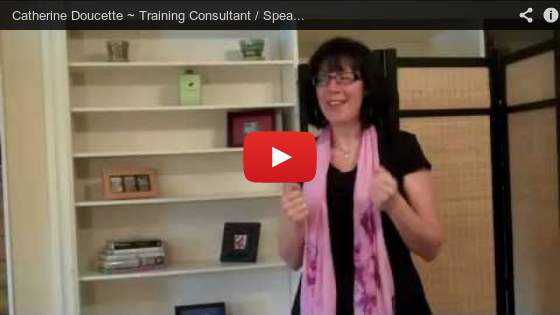 My business is teaching, talking, and sharing. In fact, blogging about training or leadership is one of my favourite parts of owning a business. So why was that upload button on YouTube this time so scary? Why did I feel the urge to inhale an entire chocolate bar or phone a friend?
My business is teaching, talking, and sharing. In fact, blogging about training or leadership is one of my favourite parts of owning a business. So why was that upload button on YouTube this time so scary? Why did I feel the urge to inhale an entire chocolate bar or phone a friend?
It was March 1, 2013. With the help of the ever-talented Elaine Shannon, I had recorded a 7-minute keynote talk to show people are inspired by the message of my second book Be you. Everything else is optional. I am one of about 60 people in North America competing for a publishing contract with Hay House, the largest publisher of self-help books on the planet. The video was required for the competition.
But this was more difficult than uploading my video blog about yoga at home or walking through Rockwood Park. It was scarier. Who the h-e-double-hockey-sticks did I think I was? Here I was about to share with the world that I am a keynote speaker and trainer –ironically, something I’ve done for 20 years. But this was new. I was publishing a piece with my original thoughts and story for the entire world to see. And judge.
Steven Pressfield’s words from the book War of Art came back to me:
The more important a call or action is to our soul’s evolution, the more resistance we will feel toward pursuing it.
A deep breath, and I pressed that big bad upload button. You know what happened? Not much. Nobody knew it was there. I had to have courage once more.
Using my social media relationships on Facebook, YouTube, LinkedIn, Google+, and Twitter, I began sharing the link and asking people to watch.
Publishing this video and spreading the word felt an awful lot like walking naked through the city streets. I really wanted to vomit.
To quote Sally Field, “They like me! They really like me!”
More than 1,300 people watched the video in two months with 100-plus positive comments and likes. That means more than 1,300 people now know about my training consulting and speaking business and my second book. I was offered a keynote because of it, plus a gig doing public speaking workshops at a large corporation. I have walked into networking events, and strangers have recognized my name because they saw my video.
When you do something well and share it online, it gives you instant credibility. Clients are convinced before you ever walk in the door.
Much courage is needed. But as long as the video is not actually of you running naked through the streets, I highly recommend that you upload a sample of your expertise on YouTube and share it with your networks.
What is one way you can share your work professionally on social media?
Catherine Doucette BPR, MEd is a Member of Learn by Sociallogical™ and teaches businesses how to create and facilitate training with a measurable impact on productivity and the bottom line.
 Not everyone is social in the offline world and I meet so many people who are afraid to be social in the online world. If I can't find something to say in person, what do I say online?
Not everyone is social in the offline world and I meet so many people who are afraid to be social in the online world. If I can't find something to say in person, what do I say online?
That's an excellent point and troublesome now that social is how we reach an audience for our business. But while being social is powerful and builds the connective tissue that results in loyalty and reach for a social business, conversation isn't the only side of it.
Sharing great content is social. That might seem obvious but by segmenting out the acts of sharing content from engaging in conversation, those who don't like to converse so much can find a place in this space.
Most of us live a portion of our lives online and we all find great content every day that is relevant to our business and what we do. Share it! Your target audience wants to see what engages you and it will help to shape your brand. Articles, resources, instructional videos, infographics, photos - anything that can be helpful to your clients and imply what is important to you in what you do.
So there is a place for the quieter people amoung us. If you can't speak, just share.
Who do you know that has a lot to share but is reluctant to? How might you encourage them?
Note about the photo above: Sarah Tapley is a new Member of Learn by Sociallogical™ and is a design guru with Tuck Studio and Punch Inside. She spends each day with her nose in countless amazing design websites, her hands on the creation, assembly and display of super interesting design products, and listening to what inspires clients the most about the spaces they live and work in. Of course Sarah has a ton of great things to share! In fact, much of what Sarah has to share doesn't even need words. (Photo credit: Kelly Lawson)
 Social is the first truly new gift to humanity that the Internet has ever given us. It makes sense that it is going to take some time and a little effort to understand it and let it soak into our daily lives because nothing about it feels natural to anyone in the beginning.
Social is the first truly new gift to humanity that the Internet has ever given us. It makes sense that it is going to take some time and a little effort to understand it and let it soak into our daily lives because nothing about it feels natural to anyone in the beginning.
First, the business world was given email. Some whined and complained about this new intrusion of technology (and expectation of quicker response times) into our daily work lives, but we adapted quite easily because we understood it immediately.
We've had postal mail for centuries and this was just an electronic version of it. We all "got" it.
Then came the business web with the release of Netscape and the modern web browser that let us easily "surf" web pages made by fellow business people, academics, and government. Many resisted the demands their customers placed on them to make their information known through the web but we all eventually found our way there and built web pages for our businesses.
We understood it simply because the early business web really just took the information from our print materials - brochures, business cards etc. - and put it on this new digital interface. Just a fancy version of our print materials, right?
But then social media emerged that allowed one or a massive number of people to connect to one or a massive number of people with text, voice, video and more and that has never been possible before in human history. Anybody can produce a media empire, free of the financial and infrastructure barriers that used to exist in earlier eras.
Social media enables digital humanity. That's a statement that is almost meaningless as social media is just social now. It's not the special circumstance in which we connect like a conference used to be, it's now the main method of connecting. If it isn't for you, should it be? Or does your business have a few good reasons for not becoming social?
Social is not a new internet. It is you - online. The social layer is the layer of human meaning and stickiness to an otherwise cold digital channel. Embracing that human element and making it work for your business is the pursuit of becoming a social business.